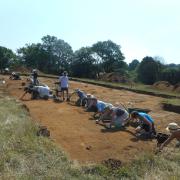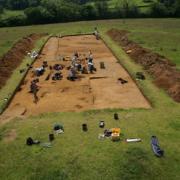Excavations at Cocks Farm Roman villa, Abinger (2009- present) - interim reports
Between 1995 and 1997 Surrey Archaeological Society carried out excavations under the direction of Steve Dyer to investigate archaeological evidence revealed when a tree blew over at Cocks Farm, Abinger. The presence of a villa had been known since the 1870s when Roman walls were found during the expansion of a kitchen garden . When well-preserved remains of an east-west range of a Roman building were discovered, the fieldwork was targeted to provide information for the future management of the site and to indicate a suitable area for scheduling as an ancient monument.




